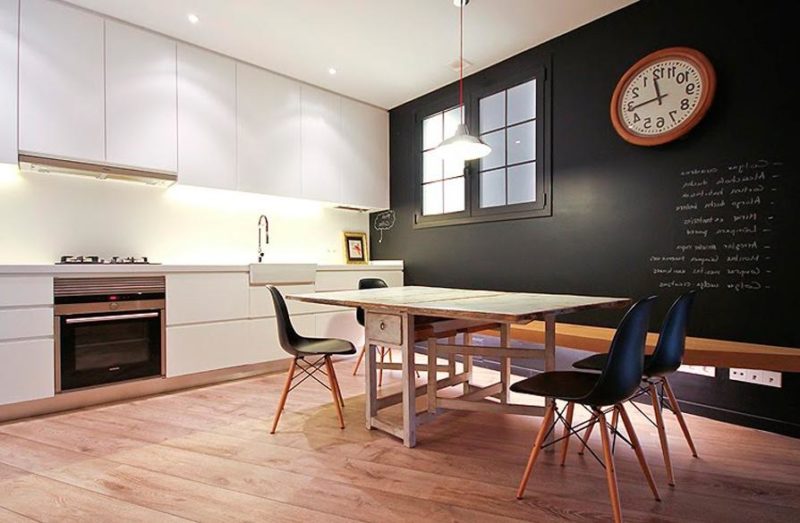What is a combination lighting system and where is it used
Combined lighting allows you to create the best conditions for work or leisure. With its help different projects can be realized and separate zones can be highlighted if necessary. In this case, there are different options for combining, so it is best to understand the issue in advance.
The concept of combined lighting
Combined lighting is lighting that combines two or more varieties of lighting fixtures. This allows you to optimize light and adapt it to specific conditions. Initially, only general lighting can be installed in a room, office or workshop. It can be supplemented if required.
Advantages of the combined option:
- The possibility of allocating a separate area for comfortable work or needlework.
- Adjustable models allow you to direct the light stream to the desired location.
- Using a combined system helps to illuminate both horizontal and vertical or diagonal planes.
- Saves power by allowing you to turn off auxiliary light sourcesIf they are not needed.
- Fixtures can be installed anywhere. They can be both stationary and portable.
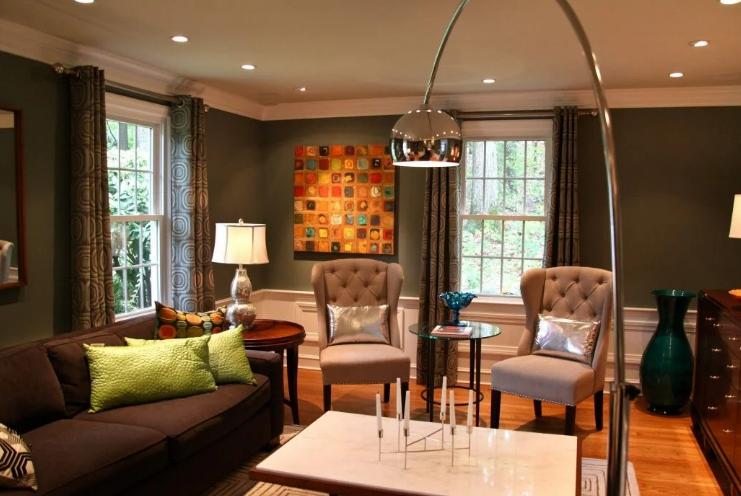
Combined lighting has disadvantages as well:
- Higher costs compared to a shared lighting system. You have to buy additional equipment and bring electricity.
- The complexity of implementing combined natural light. It can only be done during the construction or renovation phase of a building.
By the way! For production facilities need to coordinate the lighting system with the supervisory authorities.
Types of combined lighting
There are several types, differing in terms of implementation. Different types can be used in a room, there are no restrictions.
Lighting of the natural type
The combined system is a window openings in the walls and in the roof. At the same time, the natural variant has peculiarities that must be remembered when planning:
- Windows in the walls are placed so as to ensure an even flow of light into the room. Their size is determined based on the area inside. That said, windows that are too large will be expensive, plus there will be much more heat loss through them. It is important to determine the optimal height and width, as well as the number.
- In production halls on the roof make a structure called a skylight. This is a superstructure with windows on both sides, which most often goes along the entire length of the structure. Such a design simplifies construction and reduces the risk of leaks.
- At attic floors special windows are inserted to complement the light from the openings in the gables. This option is suitable for small buildings.
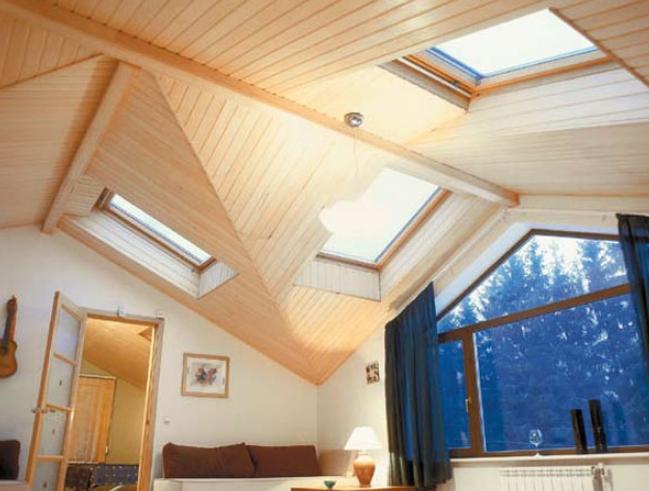
Artificial lighting
Combined artificial lighting - The main option in most rooms. It does not depend on the weather outside and provides a comfortable environment at any time of day. Most often the basis is general lighting, which is selected for specific conditions.
Additional elements are selected according to the specifics of the work to be performed or according to the characteristics of a particular room. For example, in the kitchen it is necessary to illuminate the working area, and in the corridor - the space near the mirror. Below are described specific options that are most common.
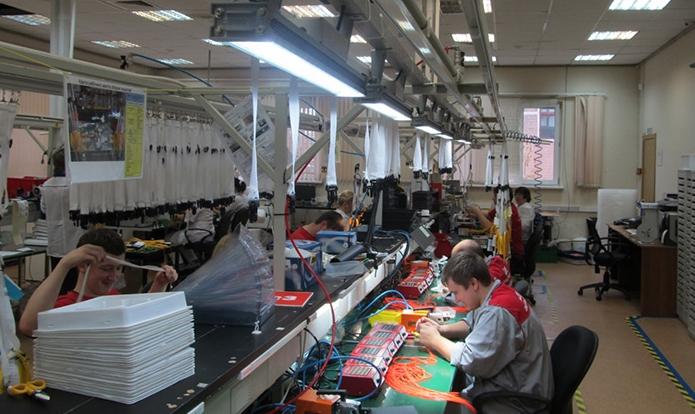
General
Can be used in different rooms, where it is necessary to change the intensity of light from time to time or to highlight certain parts of the room. For example, along the wall, built-in lights are placed, which are turned on if it is necessary to illuminate the dining table, recreation area, etc.
Another variety is track systemsThe equipment is not only directed to the right place and switched on when necessary, but can also be moved anywhere on the tire. Complexes of different types of equipment can be used in order to achieve the desired result through their combination.
Local .
This option can also be a combination. Most often on the wall or ceiling is a lamp that illuminates a particular part of the room, and additional equipment is also used. For example, a table lamp, which can be turned on if it is necessary to perform work of particular precision.
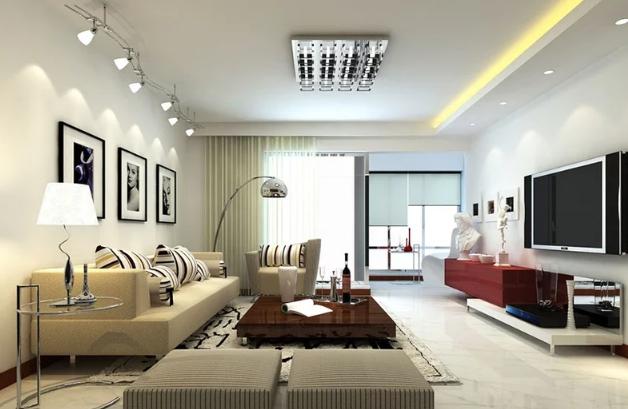
Sometimes it is necessary to change the color of the lighting or use special lamps, they complement the general or local light and are used as needed. Auxiliary options include LED strip.
By the way! If you install a large number of spotlights, you can do without a chandelier.
Decorative
In this case, mixed light will be a great solution, because with its help you can diversify the decorative lighting. For example, the installation of directional light fixtures and built-in equipment, so that you can combine modes or change them depending on the situation.
By installing different versions of light is easy to change the accents in the room and focus attention on the right objects. A modern option is LED equipment, particularly well combined spotlights and diode strips.
Design features
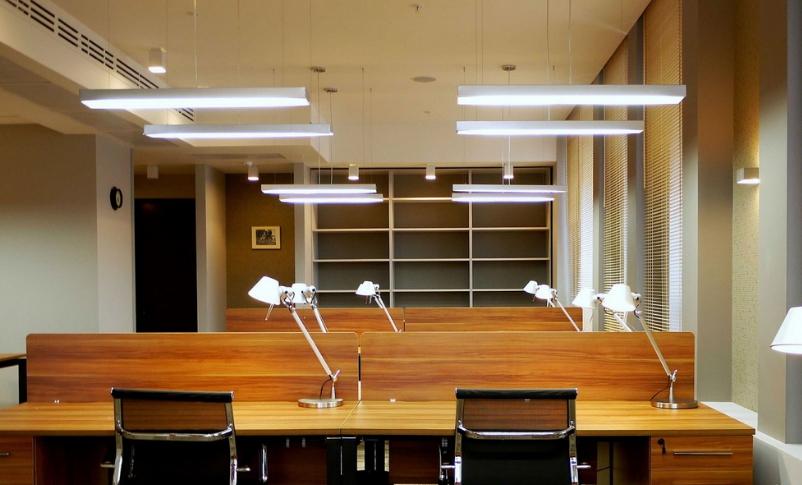
High requirements for combined lighting are mainly in production halls and office spaces. In homes and apartments there is no rigid framework, you can put different lights. When it comes to planning, there are several things to consider:
- The specifics of the room and the nature of the work to be performed are taken into account. After that, the optimum lighting standards are selected, they are prescribed in SNiP and SP. In addition, industry regulations can be additionally used, if they exist.
- The design of the future system is better to entrust to professionals. It is important to develop a precise project specifying the location of fixtures, their type and power. The work is often carried out as part of the overall design, if all activities are carried out in complex.
- You can use different methods to develop a project. For example, based on the standard of illumination and select the lighting equipment in accordance with this indicator. The second option - if the lights are already there or you want to use equipment of a certain type, then think about the necessary number light sources and their location in the room.
- When planning, a number of calculations must be made, because the level of light depends not only on the lamps used, but also on the color of the walls and ceilings. The presence of natural light, the color of the walls and ceiling, and other important aspects are also taken into account.
After installing the equipment, the illumination indicators are checked. To do this, use a special device - a luxmeter.
Combined lighting allows you to adjust to any conditions. With its help, it is easy to highlight certain zones or provide the desired brightness of light on the work surface.
